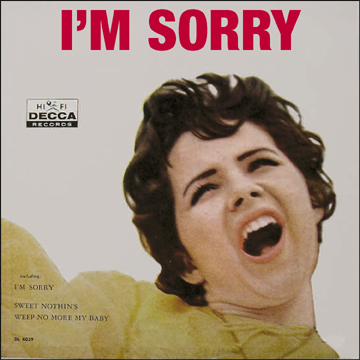
Sand Creek Apologia
I could almost hear Brenda Lee’s voice belting out “I’m Sorry” when Governor John Hickenlooper addressed a group of Native Americans on the steps of the State Capitol in November.
On behalf of everyone reading this and those of you who are not, John Hickenlooper apologized for you to native people for the massacre that occurred on November 29, 1864, in a place on the eastern plains that’s now known as Sand Creek.
 He told the representatives of the Cheyenne people and Arapaho people that not only was he sorry, but he was in fact very, very, very sorry. For good measure he also apologized to a Navajo guy according to The Denver Post and about 20 other American Indian students as well as some kid who inadvertently happened to be walking down toward the City and County Building. Hickenlooper, helpfully, added that this is a healing process for everyone. OK fine.
He told the representatives of the Cheyenne people and Arapaho people that not only was he sorry, but he was in fact very, very, very sorry. For good measure he also apologized to a Navajo guy according to The Denver Post and about 20 other American Indian students as well as some kid who inadvertently happened to be walking down toward the City and County Building. Hickenlooper, helpfully, added that this is a healing process for everyone. OK fine.
I think it’s only fair that I make a list of people I want to apologize to and things I want apologies for.
Let’s begin with my apologies to the citizens of Hiroshima and Nagasaki. As they in turn apologize to the citizens of Nanking who then apologize to the people in Tibet who are also apologized to by any of your sub-continent Indians who are apologized to by any member of the British royal family or who are apologized to by our gallant allies the Pakistanis who then must apologize to the Bangladeshis who are then apologized to by the Persians (what you call your modern day Iranian) who then apologize to the Shah of Iran who should apologize to his father who he helped overthrow because the old man was getting into bed with the Nazis. Of course the Nazis should apologize to everybody.
On the other hand the CIA should apologize to the people of Iran for overthrowing a clean election and reinstalling the Shah. And while we’re at it the British should apologize to the following people; the Irish, the Scottish, the French, the Welsh, the Cornish, any number of people who came to this country and had to kick their ass out.
And lest we forget the Hong Kong Chinese, the entire Mandarin class of mainland China (for introducing them to that fun loving drug opium), any number of tea merchants who they also had terminated and while we’re at it I believe the Japanese owe a universal apology to the citizens of Nanking and the entire peninsula of Korea and North Koreans to South Koreans. Which leads us to any number of Manchurians who have been had by Russians, Japanese, Mongols and Mandarin Han Chinese.
How about those French apologizing to Huguenots, any numbers of people who lived in Italy and hey, how about that Napoleon. Shot the nose off the sphinx, a couple of apologies to the Egyptian people.
The Italians should apologize to the Ethiopians and what about Hannibal? Somebody owes him big time.
And while we’re at it how ’bout those Romanovs? Yeah, they sure got theirs. Who apologizes to the Romanovs? Do you expect Putin to apologize to Nicholas and Alexandra? And the family. Can you see where this is headed?
This column could grow greater than the size of this entire newspaper. However, in the politically correct environment that Hickenlooper apologizes in, the only people who need to apologize are Anglo men. Everybody else is a victim. But when you really think about Hutus and Tutsis, when you think about Cortez and the Aztecs, when you think about Pizarro and the Incas or anyone historically who dared fight Zulus in sub-Saharan Africa, shazam, their fish was fried.
Now I realize there’s a lot of really great historians who read this. Those of you get the point of the column. Those of you who are offended by the column do a little bit of reading and I apologize to you.
I’m still waiting for an apology from Bob Beauprez for running such a horrible campaign.
So please send an email to newspaper@glendalecherrycreek.com telling me who you would like an apology from, and I will print them.




